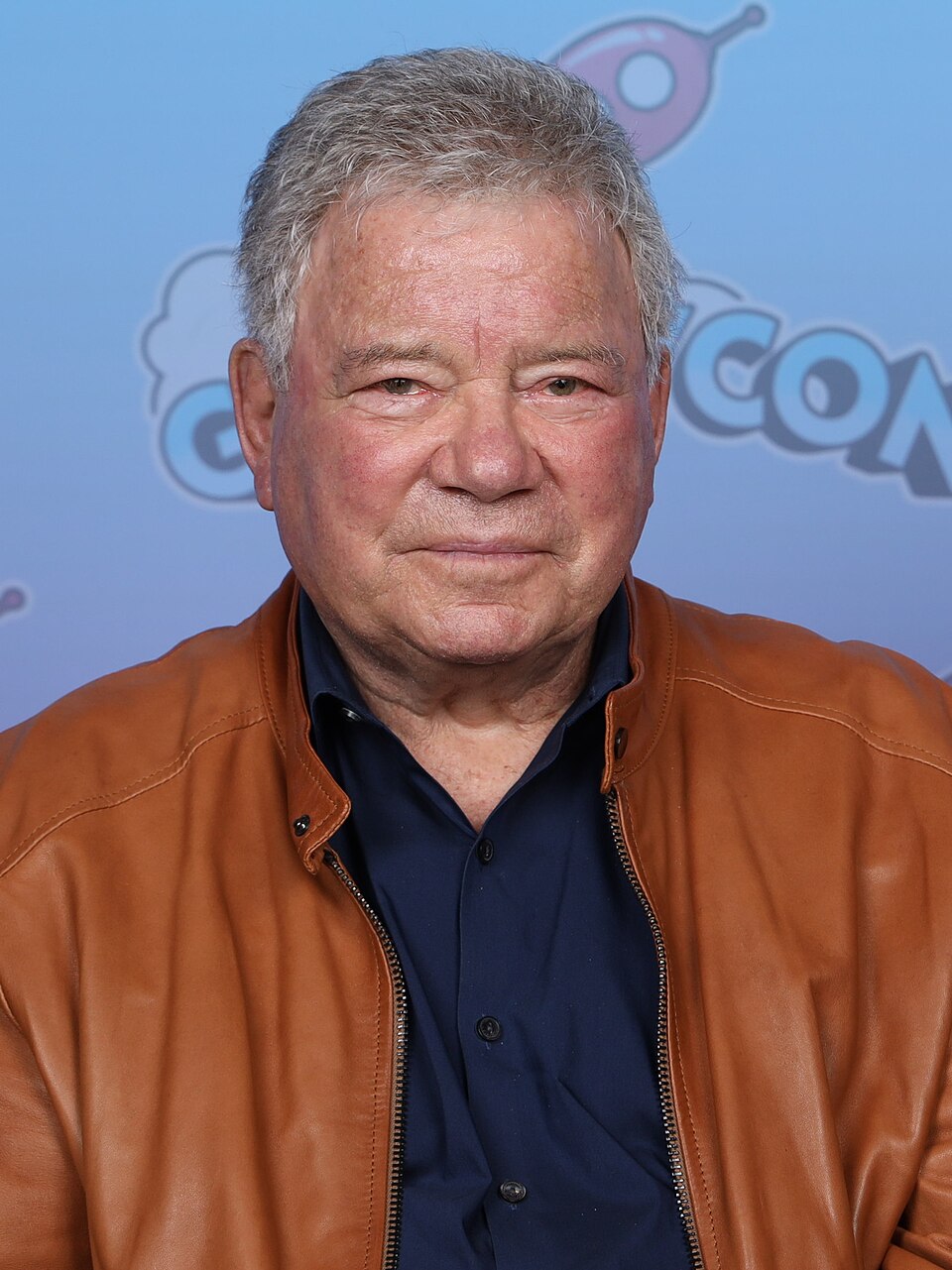William Shatner: From Starship Captain to Cultural Phenomenon
William Shatner has transcended the conventional boundaries of acting to become one of entertainment’s most enduring and multifaceted figures. At 94, the Canadian-born performer has built a career spanning more than seven decades, continuously reinventing himself while maintaining the distinctive charisma that first captivated audiences in the 1960s. From his iconic portrayal of Captain James T. Kirk to his historic spaceflight at age 90, Shatner’s journey represents an extraordinary intersection of art, science fiction, and human exploration.
Early Life and Formative Experiences
Born on March 22, 1931, in Montreal, Quebec, William Shatner was raised in a Conservative Jewish household as the son of Joseph Shatner, a clothing manufacturer, and Anne (née Garmaise). Growing up in a post-Depression era Montreal, young Shatner developed an early interest in performance through community theater and summer camps, where he discovered a natural ability to command attention.
His formal education took him to McGill University, one of Canada’s most prestigious institutions, where he initially studied commerce and economics—a practical path that belied his growing artistic ambitions. At McGill, Shatner became involved with the university’s theater productions, gradually shifting his focus from business studies to performance.
“I was supposed to go into my father’s business,” Shatner recalled in his memoir “Up Till Now.” “But I had discovered this magical world of make-believe, and once I experienced the applause and connection with an audience, there was no turning back.”
After graduating from McGill in 1952 with a Bachelor of Commerce degree, Shatner made the pivotal decision to pursue acting professionally rather than follow the more conventional career path his education had prepared him for. This choice marked the beginning of a professional journey characterized by risk-taking and reinvention that would define his approach to his career for decades to come.
Early Career and Professional Development
Shatner’s professional acting career began at the Stratford Shakespeare Festival in Ontario, where he performed in productions of Shakespeare’s plays alongside fellow Canadian actors who would later achieve significant success, including Christopher Plummer. This classical training provided a foundation in dramatic technique that would later contrast with—and perhaps inform—the more stylized performance approach he became known for.
By the mid-1950s, Shatner had established himself in Canadian radio drama and television, appearing in CBC productions and gradually building a resume that demonstrated his versatility. His work ethic was evident even then, with colleagues noting his preparedness and commitment to each role, regardless of its size or perceived importance.
Recognizing the limited opportunities in Canada’s then-nascent entertainment industry, Shatner made the strategic decision to relocate to New York in the late 1950s. There, he found work in the golden age of live television drama, appearing in prestigious anthology series like “Studio One,” “The United States Steel Hour,” and “Alfred Hitchcock Presents.”
This period also saw Shatner make his Broadway debut in “Tamburlaine the Great” (1956) and appear in the 1958 film “The Brothers Karamazov” alongside Yul Brynner. While these early roles did not immediately catapult him to stardom, they demonstrated his range and established him as a reliable dramatic actor who could handle both classical and contemporary material.
The early 1960s found Shatner working steadily in television, making guest appearances on popular series including “The Twilight Zone,” “Route 66,” and “The Defenders.” His 1963 appearance in the “Twilight Zone” episode “Nightmare at 20,000 Feet”—where he portrayed a passenger who sees a gremlin on an airplane wing—became particularly memorable, showcasing his ability to convey extreme psychological states that would later become a hallmark of his performing style.
Despite this consistent work, Shatner faced the financial uncertainties common to working actors. “I was living job to job,” he later wrote. “I had a family to support, and there were times when I genuinely didn’t know where the next paycheck would come from.”
This precarious professional reality makes the role that eventually transformed his career all the more significant. When Shatner was cast as Captain James T. Kirk in a new science fiction series called “Star Trek” in 1966, he approached it as he had his many other television jobs—professionally, but with little indication that it would fundamentally alter the trajectory of his life and career.
Star Trek and the Creation of an Icon
NBC’s “Star Trek,” created by Gene Roddenberry, premiered on September 8, 1966, introducing audiences to the starship Enterprise and its five-year mission to explore strange new worlds. As Captain Kirk, Shatner immediately established a commanding presence—authoritative but humane, combining tactical brilliance with moral courage and occasional romantic bravado.
The role showcased Shatner’s distinctive acting approach, characterized by dramatic pauses, emphatic delivery, and physical dynamism. While this style would later be widely parodied, it proved remarkably effective in conveying the high-stakes decisions and emotional conflicts facing a starship captain in extraordinary circumstances.
“Star Trek” ran for three seasons before cancellation in 1969, producing 79 episodes that performed modestly in their original broadcast but would later gain immense cultural significance. During its original run, the series earned Shatner a devoted fan following but did not immediately transform him into a major Hollywood star.
“When the show was canceled, I was essentially unemployed,” Shatner recalled. “I lived for a time in a pickup truck with a camper top, traveling from small theater to small theater, doing one-man shows to make ends meet. The idea that Kirk would become this cultural touchstone would have seemed absurd.”
Indeed, Shatner’s post-“Star Trek” years initially brought him back to the working actor’s life of guest appearances and television films. He starred in the short-lived series “Barbary Coast” (1975-1976) and narrated the documentary series “The Unexplained,” while also appearing in films like “The Devil’s Rain” (1975) and “Kingdom of the Spiders” (1977).
What Shatner could not have anticipated was how profoundly “Star Trek” would grow in cultural significance during the 1970s. As the series gained popularity through syndicated reruns, a passionate fan community developed, organizing conventions and creating what would become one of entertainment’s most enduring phenomena. This grassroots enthusiasm eventually convinced Paramount to revive “Star Trek” as a film franchise.
“Star Trek: The Motion Picture” (1979) reunited the original cast with a significantly increased budget, beginning a series of films that would continue through “Star Trek VI: The Undiscovered Country” (1991). These films transformed Shatner from a working actor with a cult following to a genuine cultural icon, while also providing him with unprecedented creative opportunities, including directing “Star Trek V: The Final Frontier” (1989).
Throughout this period, Shatner developed a complex relationship with the character and franchise that defined him publicly. In his 1999 book “Get a Life!” and the documentary film of the same name, he explored his journey from initial dismissiveness toward “Star Trek” fandom to a deeper appreciation of the community and the show’s cultural impact.
“I didn’t understand it for years,” he acknowledged. “Why were people so connected to this show? What was I missing? It took me a long time to recognize that ‘Star Trek’ wasn’t just entertainment—it was a vision of hope, a belief that humanity could overcome its problems and reach for the stars.”
Career Reinvention and Diversification
While “Star Trek” created a permanent association between Shatner and Captain Kirk, his subsequent career demonstrated remarkable adaptability and willingness to reinvent himself. In 1982, he took on the title role in the police drama “T.J. Hooker,” playing a character distinctly different from Kirk—a veteran police sergeant mentoring younger officers. The series ran for five seasons, reestablishing Shatner as a contemporary television lead rather than merely a science fiction icon.
The 1980s and 1990s also saw Shatner embrace the emerging reality and talk show formats, hosting “Rescue 911” (1989-1996) and appearing as a guest host on “The Tonight Show.” These opportunities revealed his quick wit and self-deprecating humor, qualities that would become increasingly central to his public persona.
Perhaps most significantly, Shatner began to diversify his creative output beyond acting. He directed television episodes and films, wrote or co-wrote a series of science fiction novels (including the “TekWar” series, which was adapted for television), and recorded musical albums that featured his distinctive talk-singing vocal style.
These albums, beginning with “The Transformed Man” (1968) and continuing through collaborations with musicians like Ben Folds on “Has Been” (2004), became cultural touchpoints in themselves. Shatner’s dramatic interpretations of songs like “Lucy in the Sky with Diamonds” and “Common People” initially drew mockery but eventually gained recognition as unique artistic statements that transcended simple parody.
This willingness to risk ridicule by pursuing creative expression outside conventional boundaries became a defining aspect of Shatner’s late career. Rather than being limited by potential criticism, he consistently embraced new challenges with enthusiasm and commitment—a trait that would serve him well in the unexpected career renaissance that awaited him in his seventies.
Late Career Triumph and Cultural Embrace
In 2004, at age 73, William Shatner experienced what many observers have described as one of the most remarkable late-career revivals in entertainment history. Cast as eccentric attorney Denny Crane in “The Practice” and its spinoff “Boston Legal,” Shatner created a character that simultaneously played on and transcended his existing persona.
Denny Crane—brilliant, politically incorrect, and gradually confronting cognitive decline—allowed Shatner to showcase his comedic timing while also delivering moments of genuine pathos. The performance earned him two Emmy Awards and a Golden Globe, introducing him to a new generation of viewers and earning critical acclaim that had often eluded him earlier in his career.
“Boston Legal” creator David E. Kelley noted: “Bill brought everything to Denny—the gravitas, the humor, the vulnerability. He wasn’t afraid to be ridiculous one moment and heartbreaking the next. It was a fearless performance from an actor with nothing left to prove.”
This period also saw Shatner embrace his status as a cultural icon with new confidence, appearing in advertising campaigns that playfully referenced his history and developing a distinctive social media presence. Rather than distancing himself from Captain Kirk or his stylized performance approach, he incorporated these elements into a self-aware public persona that acknowledged the past while continuously moving forward.
His hosting of the biography series “Raw Nerve” (2008-2011) revealed yet another dimension of his talent, as he conducted surprisingly intimate and insightful interviews with fellow celebrities. Meanwhile, his one-man Broadway show “Shatner’s World: We Just Live in It” (2012) received positive reviews for its entertaining blend of career anecdotes, philosophical musings, and characteristic Shatner humor.
Throughout this period, Shatner continued his prolific writing career, publishing memoirs, novels, and documentary projects that explored everything from his “Star Trek” experiences to his interest in progressive rock. Each new venture demonstrated his restless creativity and refusal to be defined by any single role or achievement.
Historic Spaceflight and Later Years
On October 13, 2021, William Shatner achieved a distinction unprecedented in entertainment history when, at age 90, he became the oldest person to travel to space. As a passenger aboard Blue Origin’s New Shepard spacecraft, Shatner experienced approximately three minutes of weightlessness and viewed Earth from a suborbital altitude of over 66 miles.
The symmetry of this achievement—the man who had portrayed a starship captain inspiring generations of scientists and engineers now personally experiencing spaceflight—created a powerful cultural moment that transcended mere celebrity stunts. Shatner’s eloquent reflections upon returning to Earth revealed the profound impact of the experience.
“What I would love to do is to communicate as much as possible the jeopardy, the moment, the vulnerability of everything,” he told Blue Origin founder Jeff Bezos immediately after landing. “This air, which is keeping us alive, is thinner than your skin. It’s a sliver, it’s immeasurably small when you think in terms of the universe.”
In subsequent interviews and his 2022 book “Boldly Go,” Shatner expanded on the psychological impact of seeing Earth’s fragility from space—an experience astronauts call the “overview effect.” His description of feeling both overwhelming sadness for the planet’s vulnerability and profound gratitude for its beauty demonstrated an introspective depth that added yet another dimension to his public persona.
Now in his nineties, Shatner maintains an active schedule of personal appearances, speaking engagements, and creative projects. His 2022 documentary “You Can Call Me Bill” offered an introspective look at his life philosophy, while his continued presence at science fiction conventions connects him with multiple generations of fans.
Personal Life and Relationships
Throughout his public career, Shatner’s personal life has seen both joy and profound tragedy. He has been married four times: to Canadian actress Gloria Rand (1956-1969), with whom he had three daughters; to Marcy Lafferty (1973-1996); to Nerine Kidd Shatner, who died in an accidental drowning in 1999; and to Elizabeth Anderson Martin (2001-2020).
The death of Nerine, who struggled with alcoholism, was a devastating personal loss that Shatner has spoken about with remarkable candor, both in his memoir “Up Till Now” and in interviews addressing addiction and grief. This tragedy informed his subsequent philanthropic work and added emotional depth to his later performances.
Shatner’s relationships with his “Star Trek” castmates have been famously complicated, with some colleagues describing him as self-absorbed during the show’s production. These tensions became public through various memoirs and interviews, creating a complex narrative about the behind-the-scenes reality of the beloved series.
In recent years, Shatner has acknowledged these criticisms while offering his own perspective on the pressures of leading a television series when supporting his family was his primary concern. This willingness to engage with criticism rather than simply dismissing it reflects the self-awareness that has characterized his later career.
Beyond entertainment, Shatner has maintained lifelong passions for horses and equestrian sports, raising and showing American Saddlebreds on his Kentucky farm. This connection to horses has provided both personal fulfillment and charitable opportunities through his Hollywood Charity Horse Show, which has raised millions for children’s charities since 1990.
His commitment to animal welfare extends to other causes, including sea shepherd conservation efforts and wildlife preservation. Additionally, Shatner has been involved with various charities supporting children with special needs, often leveraging his celebrity status to raise funds and awareness.
Artistic Legacy and Cultural Impact
William Shatner’s contribution to popular culture extends far beyond his portrayal of a single character, encompassing multiple dimensions of influence that continue to evolve even as he approaches his mid-nineties.
Most obviously, his portrayal of Captain Kirk helped establish a template for leadership in science fiction that balanced authority with humanity, intelligence with passion, and rule-following with necessary rebellion. This characterization influenced countless subsequent fictional leaders across media while also inspiring real-world scientists, engineers, and astronauts who cite “Star Trek” as a motivating factor in their career choices.
His distinctive performance style—sometimes described as theatrical or melodramatic—created a recognizable aesthetic that has been both parodied and celebrated. The “Shatner pause,” with its dramatic breaking of sentences into unexpected fragments, became a cultural shorthand that transcended its origins to enter broader popular awareness.
As a creative artist beyond acting, Shatner has demonstrated remarkable fearlessness in pursuing self-expression across multiple media. His spoken-word musical performances, initially dismissed as vanity projects, have gained retrospective appreciation for their sincerity and emotional honesty. Albums like “Has Been” (2004) and “Ponder the Mystery” (2013) have earned respect from music critics for their artistic integrity and willingness to engage with themes of aging, mortality, and personal meaning.
His prolific literary output—spanning science fiction, memoir, and documentary projects—reveals a consistent interest in big questions about human existence, technology, and the future. While these works vary in critical reception, they collectively demonstrate an intellectual curiosity that contradicts simplistic perceptions of Shatner as merely a hammy actor.
Perhaps most significantly, Shatner’s late-career willingness to embrace his iconic status while continuously evolving as an artist offers a model for creative aging that defies conventional expectations. Rather than retreating into nostalgia or bitter rejection of his past work, he has incorporated his legacy into an ever-expanding artistic identity that remains vital and forward-looking.
“I don’t understand the concept of retirement,” he told an interviewer on his 90th birthday. “As long as I’m able to contribute something meaningful or entertaining, why would I stop? Curiosity keeps you young, and I’m still intensely curious about everything.”
Conclusion: The Ongoing Voyage
At 94, William Shatner embodies a remarkable confluence of entertainment history, science fiction’s evolution from niche interest to cultural cornerstone, and humanity’s physical exploration of space. Few individuals can claim to have influenced popular imagination around space exploration while actually experiencing spaceflight themselves—a symmetry that gives Shatner’s life story a narrative completion most fiction writers would envy.
Yet what makes Shatner particularly fascinating as a cultural figure is his refusal to view his story as complete. Throughout his nineties, he has continued creating, questioning, and engaging with new ideas and technologies. His social media presence remains active and distinctive, his performance schedule would exhaust many younger performers, and his willingness to discuss mortality and meaning with unflinching honesty provides a rare public example of thoughtful contemplation of life’s final chapters.
“We’re all terminal,” he noted philosophically in a 2022 interview. “The question isn’t whether our story ends—it’s what we do with the time we have, how we find wonder in everyday existence.”
This perspective perhaps explains the remarkable durability of Shatner’s appeal across generations and demographics. Beyond nostalgia or science fiction fandom, he has come to represent a certain approach to life itself—characterized by enthusiasm, adaptability, and an unquenchable desire to experience everything possible within one human lifetime.
From a struggling young actor in 1950s Montreal to a nonagenarian who has literally touched space, William Shatner’s journey represents an extraordinary blending of art and life, fiction and reality. The starship captain who inspired millions to look toward the stars eventually made that journey himself, transforming from an actor playing an explorer to an actual explorer—and continuing to boldly go where few have gone before.








